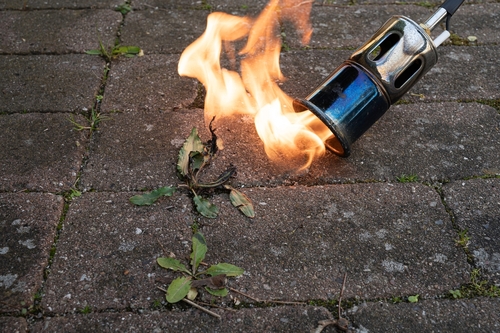Invasive plant species such as Japanese knotweed are developing much earlier in 2024 due to the warm, wet winter, a plant expert has warned.
The speed of spring growth of Japanese knotweed has led to “unprecedented” demand for specialist intervention as domestic and commercial land and property owners report new growth at an unusually early time of the year.
Andrew Ford, director of invasive weed specialists InspectasLand Remediation, said: “In our industry, the presence and damaging effects of Japanese knotweed is well-known and documented, but what we are seeing this year more than any other, is the early emergence of its growth in our customers’ premises. In fact, this is happening a whole month earlier than we’ve ever seen before.
“The speed of the spread is quite staggering but when you consider that Japanese knotweed originated in a hostile, volcanic landscape and can regrow from a root fragment that’s no bigger than a fingernail, it’s easy to see why, with the right conditions, it is flourishing and becoming even harder to get rid of.”
“Because Japanese Knotweed is already a significant problem for property developers and land-owners, we are urging extra vigilance and fast action if an infestation is suspected because the current land conditions are prefect for rapid growth and damaging spread.”
Listed by the World Conservation Union as “one of the world’s most invasive species”, Japanese knotweed was introduced into Great Britain in 1825 and today costs UK homeowners and developers millions of pounds per year to manage and eradicate as its aggressive root systems and speed of growth takes its toll on concrete, brick work, tarmac and the value of property prices.
Traditional means of controlling Japanese Knotweed using Glyphosate herbicide – a process administered by local authorities and specialists across the country – can be a good starting point. However, according to Andrew, the problem runs far deeper.
“Japanese knotweed has above-ground and below-ground propagules) that can extend as deep as 2-3m making it even harder to control with chemicals. Using too much chemical, or by applying at the incorrect time of the year can seriously thwart any realistic possibility of bringing the plant under control,” Andrew continued. “Disturbing the soil around the Japanese knotweed should also be avoided because this can lead to new growth and expansion into areas previously not affected.”
He added: “The best solution is to arrange a survey with a specialist for fast identification and a plan of action – whether complete eradication through excavation or administering just enough herbicide to put the plant into dormancy.
“Spring is always a busy time for any land remediation project but following this year’s exceptionally wet winter and perfect growing conditions, we are experiencing unprecedenteddemand for identification and management of this resilient and aggressive plant that has the potential to wreak havoc on landscapes, infrastructure and ecosystems.”
Top tips for managing Japanese knotweed:
1. Early identification: Learn to recognise Japanese knotweed in its various stages of growth. Early detection is key to preventing its spread and minimising its impact on your property;
2. Professional assessment: If you suspect Japanese knotweed on your property, seek confirmation from a qualified professional and arrange a survey to help establish a course of action and the cost;
3. Legal obligations: Understand your legal responsibilities regarding Japanese knotweed. In the UK, for example, it is classified as “controlled waste” under the Environmental Protection Act 1990, and strict regulations govern its disposal;
4. Control methods: Consider the available control methods based on your specific situation. Options include chemical treatment, physical removal, and partial excavation. Each method has its pros and cons, so consult with an expert to determine the most effective approach;
5. Avoid spread: Take precautions to prevent the unintentional spread of Japanese knotweed. Avoid disturbing soil or vegetation in infested areas and be cautious when disposing of plant material to prevent accidental propagation;
6. Educate others: Raise awareness about Japanese knotweed within your community. Sharing information about identification, management techniques, and legal requirements can help prevent its spread to neighbouring properties.
Want to comment on this story? Our focus is on providing a platform for you to share your insights and views and we welcome contributions.
If any post is considered to victimise, harass, degrade or intimidate an individual or group of individuals, then the post may be deleted and the individual immediately banned from posting in future.
Please help us by reporting comments you consider to be unduly offensive so we can review and take action if necessary. Thank you.





.png)







.jpg)
.jpg)






Join the conversation
Be the first to comment (please use the comment box below)
Please login to comment